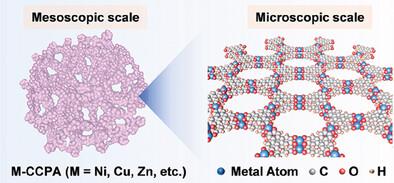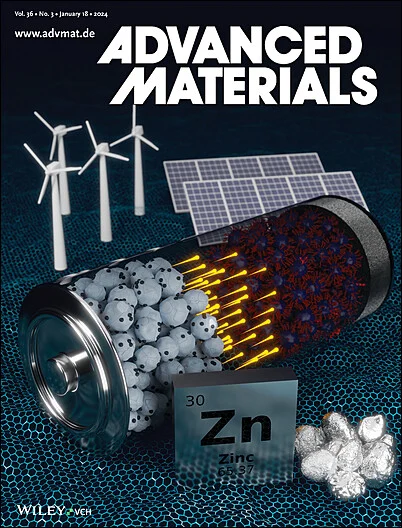Conjugated Coordination Polymer Aerogels with Increased Accessibility of Well-Defined Single-Atom Metal Sites as a New Paradigm of Electrocatalysts
IF 27.4
1区 材料科学
Q1 CHEMISTRY, MULTIDISCIPLINARY
引用次数: 0
Abstract
Developing high-performance single-atom catalysts (SACs) with maximum metal utilization efficiency is of significance, which presents enormous potentials to be extensively applied. It is desired yet challenging to elaborately tailor the coordination structures of active sites in SACs and simultaneously enable sufficient accessibility of these active sites to reactants. Here, a facile and general strategy to prepare conjugated coordination polymer aerogels (CCPA) with porous architectures that can markedly increase the accessibility of their elaborately-tailored active sites, which as a new electrocatalyst paradigm can fully present both the structural advantages of SACs and aerogel materials, is reported. Taking nickel (Ni) as an example, Ni-based CCPA (Ni-CCPA) and its counterpart Ni-CCP with non-aerogel feature are studied as a proof-of-concept case. Electrochemical measurements show that, relative to Ni-CCP, Ni-CCPA exhibits appreciably higher performance toward alkaline oxygen evolution reaction (OER). Both the experimental results and theoretical simulations unravel that the improved OER performance of Ni-CCPA arises from the accelerated OH− diffusion within its porous architecture and enhanced OH− concentration near its highly exposed active sites at its high-curvature surfaces with localized electric fields. Importantly, as evidenced by the Cu-CCPA and Zn-CCPA examples, such strategy can be promisingly applied to prepare high-performance CCPA targeted toward various catalytic reactions and beyond.

求助全文
约1分钟内获得全文
求助全文
来源期刊

Advanced Materials
工程技术-材料科学:综合
CiteScore
43.00
自引率
4.10%
发文量
2182
审稿时长
2 months
期刊介绍:
Advanced Materials, one of the world's most prestigious journals and the foundation of the Advanced portfolio, is the home of choice for best-in-class materials science for more than 30 years. Following this fast-growing and interdisciplinary field, we are considering and publishing the most important discoveries on any and all materials from materials scientists, chemists, physicists, engineers as well as health and life scientists and bringing you the latest results and trends in modern materials-related research every week.
 求助内容:
求助内容: 应助结果提醒方式:
应助结果提醒方式:


